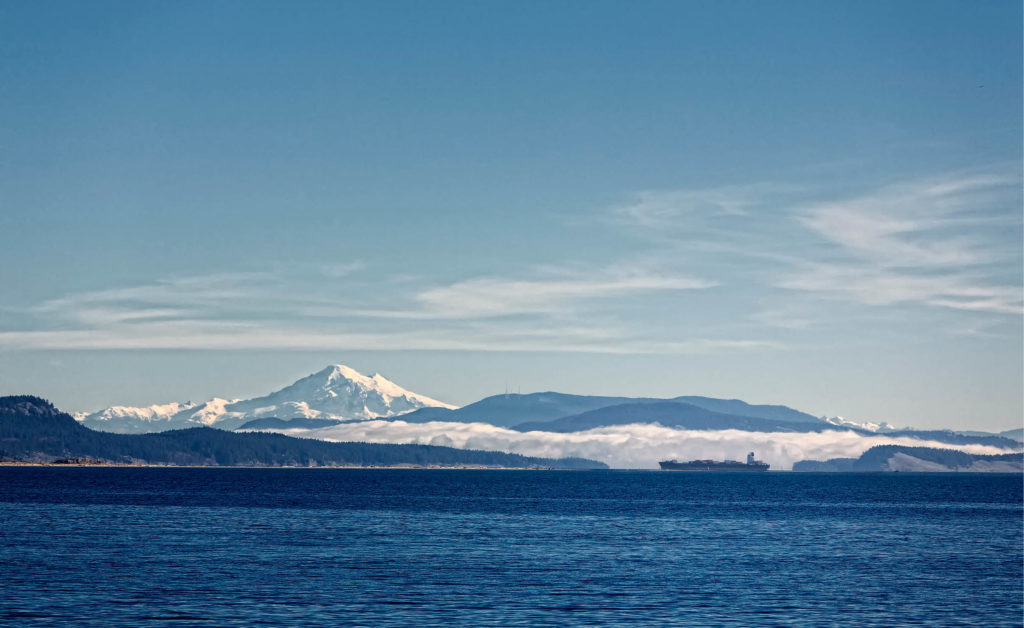by Tina Kelly, Shaw Centre for the Salish Sea –
The 15th percentile – are you in it? A survey completed just last year reflected a mere 5% of Washington State citizens and 15% of British Columbians could accurately identify the Salish Sea. If you fall into the remaining 85%, you may be surprised to learn the Salish Sea term has been official for a decade. And if you call Southern Vancouver Island home, you may be shocked to learn you are one of roughly eight million people living in the Salish Sea.
The Salish Sea is an inland sea straddling two countries and encompassing three significant bodies of water: Puget Sound, Strait of Georgia and Strait of Juan de Fuca (they still retain their individual designations). For additional context, Campbell River represents the northern border and the bioregion’s southern boundary is Olympia, Washington. Contrary to the word sea, the Salish Sea is not exclusively an ocean ecosystem but a watershed with interconnected lands, rivers and streams. It is the mixing of the region’s saltwater and many freshwater systems – essentially a large estuary – that results in the sea’s high biological productivity. The single largest influx of freshwater is B.C.’s mighty Fraser River. Looking east from Sidney on a clear day, snow-capped Mt. Baker is a magnificent sight; this mountain also signifies the Salish Sea’s eastern border.
Truth be told, the Salish Sea term has existed for decades. In the late 1980s, a name proposal was put forward by Western Washington University scientist, Bert Webber; however, it wasn’t officially accepted until 2009 (acceptance in Canada occurred in 2009 but was formally announced in early 2010). Who decides? Each country has its own board responsible for authorizing the official use of names – Geographical Names Board of Canada and United States Board on Geographic Names.
A multitude of factors led to the name suggestion. Referencing the region with a formal name would serve as a constant reminder of the interdependent and interconnected natural systems at play. Name recognition for this integrated ecosystem would aid scientific studies and help inform decisions and policy.
Conservation initiatives, at an individual level, are often linked to the psychological principle of sense of place. Sense of place forms when personal connections and social interactions with a particular site take place and it’s believed a sense of place is deeper when you can call a place by name.
The name recognizes the area’s early (and present day) inhabitants – Coast Salish peoples. This includes more than two dozen ethnically and linguistically related Indigenous groups whose territory extends from the mouth of Oregon’s Columbia River up to British Columbia’s Bute Inlet.
While geographically locating the Salish Sea rated low on the survey, a separate question reflected 48% of British Columbians had at least heard of the term. Should another survey roll around, you can proudly proclaim you’ve not only heard of it, you’ll be able to put a finger on it.
Get to know your neighbours at the Shaw Centre for the Salish Sea. Located on the traditional lands of the W̱SÁNEĆ people, the Centre is an award winning aquarium dedicated exclusively to the Salish Sea Bioregion. Open 10 a.m. to 4:30 p.m. Friday through Tuesday, closed Wednesdays and Thursdays.
Photo by Jeff Reindl.




